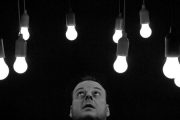1. Overview
LED Application
As a new type of photoelectric light-emitting device, LED is becoming more and more popular due to its advantages of low carbon and environmental protection, small size, light weight, low cost and long life. The development momentum is extremely rapid, which is unexpected by optoelectronic experts.
LED is not only widely used in various lighting sources, indicator lights, but also used in LCD backlight in large quantities. It has replaced the traditional fluorescent tube and become the new favorite of LCD TV. In addition, LEDs can be used as light sources for many measuring instruments.
The development of LED TV in full sense is also very fast. While it’s mostly used outdoors now, it’s only a matter of time before it makes its way into homes thanks to its high brightness and true-to-life colors and great dynamics. Therefore, it is very urgent for us to fully understand the new small partner of LED.
LED Development History
Since the advent of the first red LED in 1976, after 40 years of development, LED has formed a variety of spectral series products. The power of a single LED has also developed from the initial tenth of a watt to several watts or even tens of watts.
In 2001, R & D personnel successfully developed white LED. It is expected that LED will eventually enter the field of lighting, and even enter the home lighting. The latest white LED research results are even more exciting.
The luminous efficiency of low-power LEDs has reached 100lm/W. In particular, the research results of RGB LEDs show that LEDs, like conventional three-primary fluorescent lamps, can obtain a variety of different color temperatures and uniform lighting effects.
The progress of LED light source and people’s expectations for its application in the field of lighting have new requirements for the corresponding optical detection technology. Since the optical properties of LEDs are quite different from those of traditional light sources, it is necessary to research and develop measurement methods adapted to this new type of light source.
2. LED Light Source
Difference from traditional light source
LED (Light-Emitting-Diode) is a semiconductor that can convert electrical energy into visible light. It changes the principle of incandescent tungsten filament light and energy-saving lamp three-color phosphor light, and uses electric field to emit light.
According to the analysis, the characteristics of LED are very obvious, that is, long life, high luminous efficiency, no radiation and low power consumption. The spectrum of LEDs is almost entirely concentrated in the visible light band. Its luminous efficiency can reach 80-90%.
Comparing the LED with ordinary incandescent lamps, spiral energy-saving lamps and T5 tri-color fluorescent lamps, the results show that the luminous efficiency of ordinary incandescent lamps is 12lm/W, and the lifespan is less than 2000 hours. The light efficiency of spiral energy-saving lamps is 60lm/W, and the lifespan is less than 8000 hours. The T5 fluorescent lamp is 96lm/W and has a lifespan of about 10,000 hours. The white LED with a diameter of 5 mm is 20 ~ 28lm/W, and the lifespan can be greater than 100,000 hours. Some people also predict that the upper limit of LED life in the future will be infinite.
High Power
High power refers to high luminous power, generally refers to 0.5W, 1W, 3W, 5W or higher. The light intensity and lumens are larger than those of low-power lamps, but the heat is also very large.
Now high power is used in a single application, and a large heat sink is added. Small power is generally about 0.06W, such as plug-ins and piranhas.
Now LED flashlights are generally used with low power. Whether the light is scattered depends on the light-emitting angle of the LED. There are large and small angles. Small angles do not cause astigmatism, but large angles cause astigmatism.
high brightness
The brightness of the LED is necessarily related to the light-emitting angle of the LED. The smaller the angle of the LED, the brighter it is. If it is a 5MM LED, the brightness of the white light at a 180-degree angle is only a few hundred MCD. If the angle is 15 degrees, the brightness will reach the brightness of more than 10,000 and 20,000 MCDs, and the difference in brightness is dozens of times.
If it is used for lighting, it is best to use high-power LEDs outdoors. The brightness requirements are higher, and a single lamp with a power of 1W, 3W or 5W will be used. There are also multiple high-power lamp beads combined into a high-power LED light, with a power of several kilowatts.
LED Light-emitting Principle
LED (Light Emitting Diode) is a solid-state semiconductor device. It can directly convert electricity into light.
The heart of the LED is a semiconductor wafer, one end of the wafer is attached to a bracket, one end is the negative electrode, and the other end is connected to the positive electrode of the power supply. The entire wafer is encapsulated with epoxy.
A semiconductor wafer consists of two parts, one is a P-type semiconductor in which holes dominate. At the other end is an N-type semiconductor, on this side it is mainly electrons.
But when the two semiconductors are connected, a “P-N junction” is formed between them. When a current is applied to the wafer through a wire, the electrons are pushed to the P region, where they recombine with holes and emit energy in the form of photons. This is the principle of LED light.
LED Light Color
The wavelength of light determines the color of light, which is determined by the material that forms the P-N junction.
LEDs are made of III-IV compounds, such as GaAs (gallium arsenide), GaP (gallium phosphide), GaAsP (gallium arsenide phosphide) and other semiconductors, and their core is a PN junction.
Therefore, it has the I-N characteristics of the general P-N junction, that is, forward conduction, reverse cut-off, and breakdown characteristics. In addition, under certain conditions, it also has luminescent properties. Under forward voltage, electrons are injected into P region from N region, and holes are injected into N region from P region. Part of the minority carriers (minor carriers) entering the opposing region recombine with the majority carriers (multiple carriers) to emit light.
Generation of visible light
Assuming that light emission occurs in the P region, the injected electrons recombine directly with valence band holes to emit light. Or it is first captured by the luminescent center, and then recombines with holes to emit light.
In addition to this luminescent recombination, some electrons are captured by the non-luminescent center (this center is near the middle of the conduction band and the dielectric band), and then recombine with holes. The energy released each time is not large enough to form visible light.
The larger the ratio of the luminescent recombination amount to the non-luminescent recombination amount, the higher the photon quantum efficiency. Since recombination emits light in the minority carrier diffusion region, light is only generated within a few μm near the PN junction.
Peak wavelength of LED light
Theory and practice have proved that the peak wavelength λ of light is related to the forbidden band width Eg of the semiconductor material in the light-emitting region. That is, λ≈1240/Eg (mm). The unit of Eg in the formula is electron volt (eV). If visible light can be generated (violet light with wavelengths from 380nm to red light at 780nm), the Eg of the semiconductor material should be between 3.26 and 1.63 eV.
Light with a wavelength longer than red light is infrared light. There are now infrared, red, yellow, green and blue light-emitting diodes. However, the cost and price of blue light diodes are very high, and their use is not common.
3. Classification of LEDs
(1) Classification according to the light-emitting color of the light-emitting tube
According to the light-emitting color of the light-emitting tube, it can be divided into red, orange, green (subdivided into yellow-green, standard green and pure green), blue light, etc. In addition, some light-emitting diodes contain chips of two or three colors.
According to whether the light-emitting diode is doped with or not doped with a scattering agent, colored or colorless, the above-mentioned light-emitting diodes of various colors can also be divided into four types: colored and transparent, colorless and transparent, colored scattering and colorless scattering. Scattered light-emitting diodes are suitable for use as indicator lights.
(2) Classification according to the characteristics of the light-emitting surface of the light-emitting tube
According to the characteristics of the light-emitting surface of the light-emitting tube, it is divided into round, square, rectangular, surface light-emitting tube, lateral tube, and micro-tube for surface mounting. Circular lights are divided into φ2mm, φ4.4mm, φ5mm, φ8mm, φ10mm and φ20mm according to their diameters. Usually, the light-emitting diode of φ3mm is denoted as T-1, the one with φ5mm is denoted as T-1 (3/4), and the one with φ4.4mm is denoted as T-1 (1/4).
The angular distribution of circular luminous intensity can be estimated from the half-value angle.
From the luminous intensity angle distribution map, there are three categories:
- High directivity. Generally, it is a pointed epoxy package, or a package with a metal reflective cavity, and no scattering agent is added. The half-value angle is 5° to 20° or less, and has high directivity. It can be used as a local lighting source, or combined with a light detector to form an automatic detection system.
- Standard type. It is usually used as an indicator light, and its half-value angle is 20° to 45°.
- Scattering type. This is an indicator light with a larger viewing angle, a half-value angle of 45° to 90° or more, and a larger amount of scattering agent.
(3) Classification according to the structure of light-emitting diodes
According to the structure of light emitting diode, it can be divided into full epoxy encapsulation, metal base epoxy encapsulation, ceramic base epoxy encapsulation and glass encapsulation.
(4) Classification by luminous intensity and working current
According to the luminous intensity and working current, there are LEDs with ordinary brightness (luminous intensity 100mcd). The luminous intensity between 10 and 100mcd is called high-brightness light-emitting diode. Generally, the working current of LEDs is in the range of tens of mA to tens of mA, while the working current of low-current LEDs is below 2 mA. The brightness is the same as that of ordinary LEDs.
(To Be Continued)







